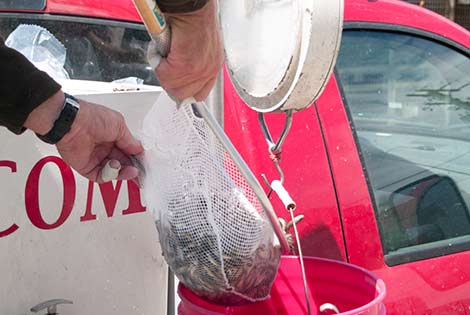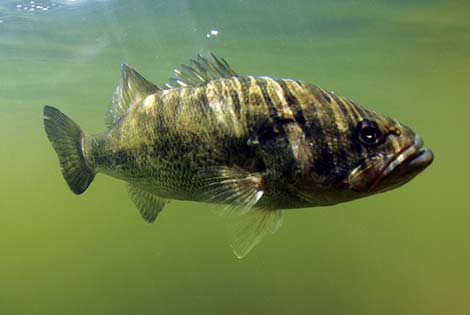Learning how to stock your pond will not only bring you lots of fishing fun, but it will also help keep algae, weeds, insects, leeches and worms under control.
Creating a Balance
To properly balance your pond, you should stock your pond with three prey fish, like perch or bluegill, for every predator fish, such as bass. This pond stocking strategy will ensure that predator fish will have a bountiful selection of prey, while still giving the prey fish a sporting chance to mature and reproduce. Keep in mind that catfish will have little effect on the prey to predator ratio as they are more likely to stick to themselves at the bottom of the pond.
When you have properly stocked your pond, your fish population will tend to keep itself in check. When you first stock your pond, we recommend adding some fathead minnows to feed the predator fish while the prey fish become established. In proper conditions, minnows can be a snack for your fish that will replenish themselves.
Fish Types
When stocking your pond, selecting fish of similar size will help the population grow together. The number of fish you add to your population will ultimately depend on the surface area of your lake or pond. Below is an example for how to stock ponds of various sizes.
| 1/4 Acre | 1/2 Acre | 1 Acre | |
|---|---|---|---|
| 2-4" Hybrid Bluegill/Sunfish | 120 | 240 | 480 |
| 3-4" Yellow Perch | 60 | 120 | 240 |
| 5-7" Largemouth Bass | 15 | 30 | 60 |
| Fathead Minnows | 8 lbs | 16 lbs | 32 lbs |
Before stocking a pond with fish, make sure to take note of any "wild fish" that may already be in the pond. Fish can be introduced into new ponds in quite a few ways. Eggs or fry can be carried in by waterfowl while other animals sneak in clinging to aquatic plants you add to your pond. Sometimes flooding can wash fish from nearby ponds, lakes, and streams into your pond. It is inevitable that over time, outside fish will find a way to make your pond a place of their own. You will also want to fish or trap to confirm larger prey fish are not already in the pond before stocking.
When to Stock a Pond
Spring or fall is the ideal time for pond stocking. Temperatures are mild and oxygen levels are high, so the stress factors that affect fish will be at their lowest. Once acclimated to your pond, they will be primed to flourish. Fish can also be added in the summer, but they will need a little more time to adjust.
Acclimating Fish
After stocking your pond, acclimating fish is simple. Place the transportation bag in a shaded area of the pond and let float for 15-20 minutes. This allows fish to slowly adjust to water temperatures in your pond. Next, open the bag and let the fish swim out on their own. If you are adding fish to a pond where fish are already present, release minnows at one end of the pond to attract larger fish and release the smaller fish at the opposite end so they have a chance to find shelter.
Habitat
Keep in mind when stocking a pond with fish that adding habitats will increase the ability for the smaller prey fish and minnows to hide and safely reproduce. Existing weeds and other structures will provide some cover, but a specially designed environment like a Porcupine Fish Attractor or Fish Attractor Trees can improve upon what is already there by creating a habitat that won't decompose. Attractors and trees are also great places for fishing as fish naturally congregate and spawn in these areas and they will not snag fishing line. Learn more about the importance of habitat here: How to Create Habitat.
Maintenance
To keep the population of both predator and prey fish high, make sure the water is well oxygenated when pond stocking. If you do not already have an aeration system set up in your pond, now is a good time to add one. When you introduce new fish to a pond or lake, they will be adding waste - something that can cause an algae bloom, pH shift, and potential fish kill. Adding an aeration system and beneficial bacteria, like those found in the ClearPAC Plus, will decrease toxic gases, increase the amount of dissolved oxygen in the water, and prevent harmful stratification from occurring.
Try to catch some of the fish in your pond each season and record how many of each type exit while inspecting them for color, weight, and size. Occasionally checking up on your fish will decrease the frequency and severity of population issues, while making your pond an enjoyable addition to your home with fun activities for the entire family. Enjoy these tips and try putting them to use the next time you are stocking your pond with fish!
Last Updated: February 10, 2023



